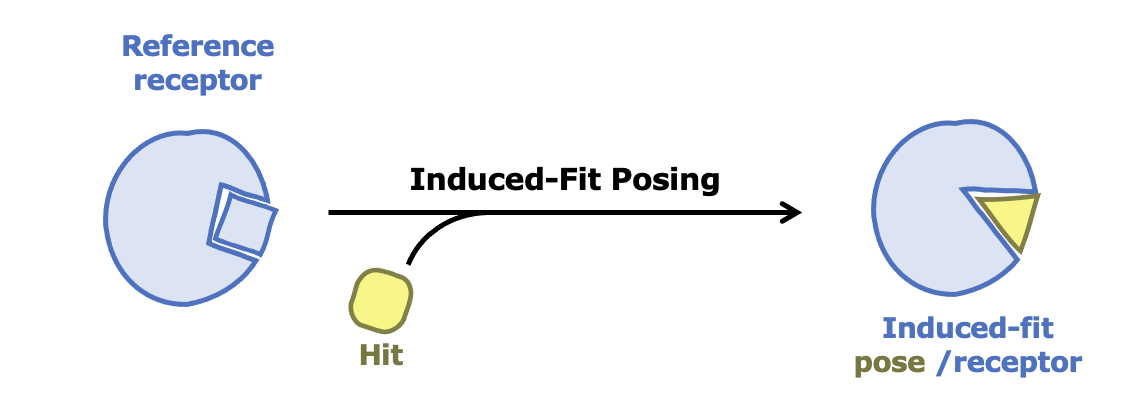Improving Predictions for Diverse Chemotypes and Flexible Proteins (August 28, 2024)
What you will learn: Strategies to improve docking results when working with datasets containing diverse chemotypes and flexible proteins..
Estimated read time: 2 minutes.
Question: My known ligand hits feature diverse chemotypes and lack structural similarity to available crystallographic structures. The resulting side chain clashes have led to poor docking outcomes. How can I improve the accuracy of my predicted poses?
Answer: Consider using the induced-fit posing (IFP) floes available in Orion®. Induced-fit posing adjusts the receptor binding site residue side chains to better accommodate the ligand, thereby improving the accuracy of binding pose predictions.

Induced-Fit Posing Schematic
OpenEye’s IFP protocols consist of three steps. In the initial step, binding site residues are pruned to create more space for docked molecules. Binding hypotheses are then generated in both pruned and unpruned receptors using OEDocking (standard docking protocols) to maximize pose reliability. High-scoring poses from OEDocking undergo a short trajectory MD (STMD) simulation, which allows for side chain rearrangements and ligand repositioning. Clustering trajectories from STMD yield representative, low-energy binding site conformations with ligand poses. These conformations are then scored using a consensus method that integrates Molecular Mechanics Poisson-Boltzmann Surface Area (MM-PBSA), docking scores, and knowledge-based protein–ligand interaction assessments. Higher IFP scores represent greater confidence that the predicted induced-fit conformation is accurate.
The IFP protocol is fully automated and provided as a ready-to-use, off-the-shelf solution for scientists.
To learn more:
Download the Science Brief on induced-fit posing.
Watch the Recorded miniWebinar on induced-fit posing.
Access the Documentation page on induced-fit posing.
More Information and Suggestions
Access these Orion video tutorials.
Do you have suggestions for Orion Tips you’d like us to feature or content you’d like to share? We value your input and would love to hear from you. Please email support@eyesopen.com (Attn: Markus).
Have questions? Our Support Team is available to assist you and is fully committed to your success. Contact us at support@eyesopen.com.
Answer: Consider using the induced-fit posing (IFP) floes available in Orion®. Induced-fit posing adjusts the receptor binding site residue side chains to better accommodate the ligand, thereby improving the accuracy of binding pose predictions.